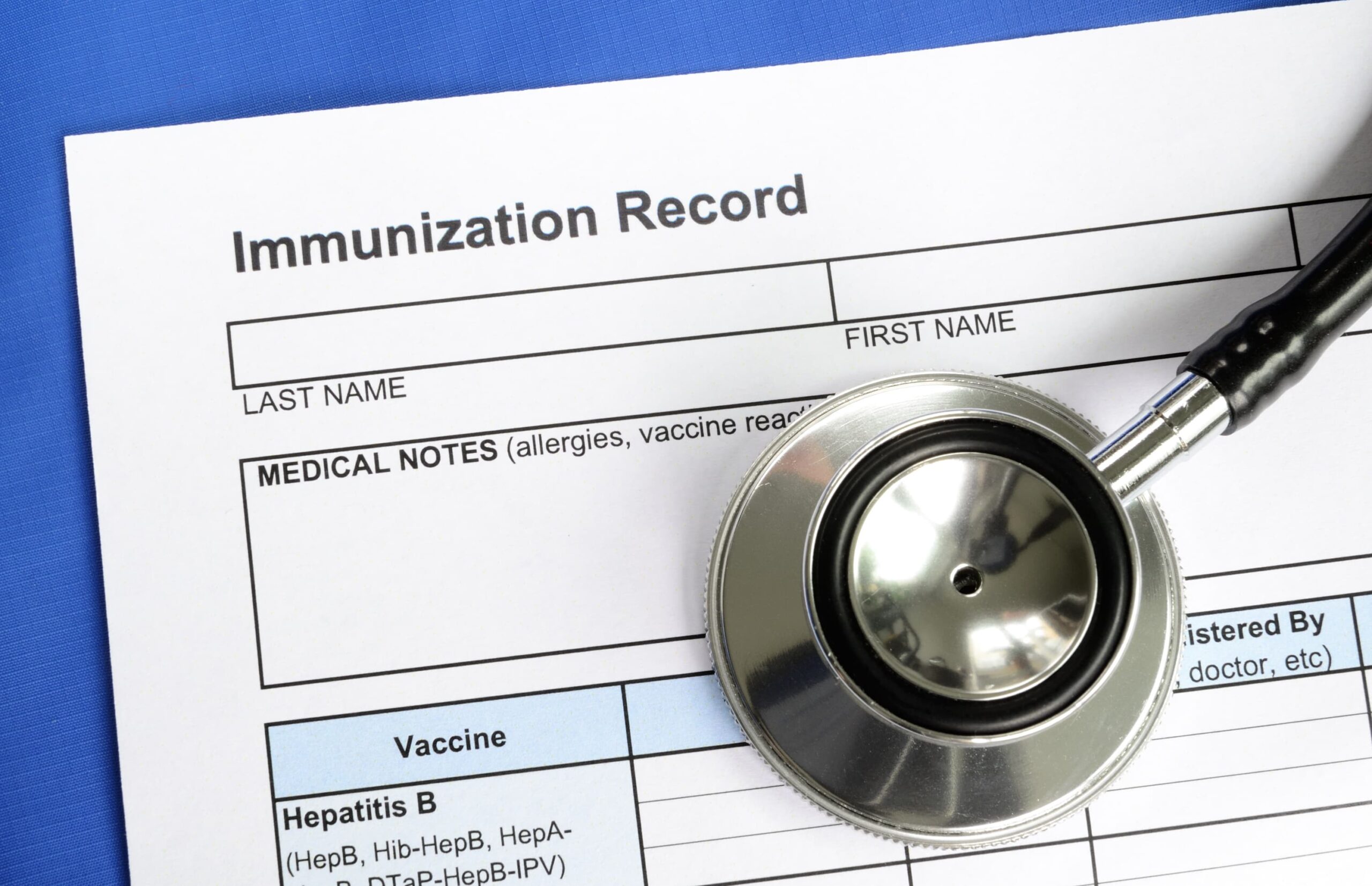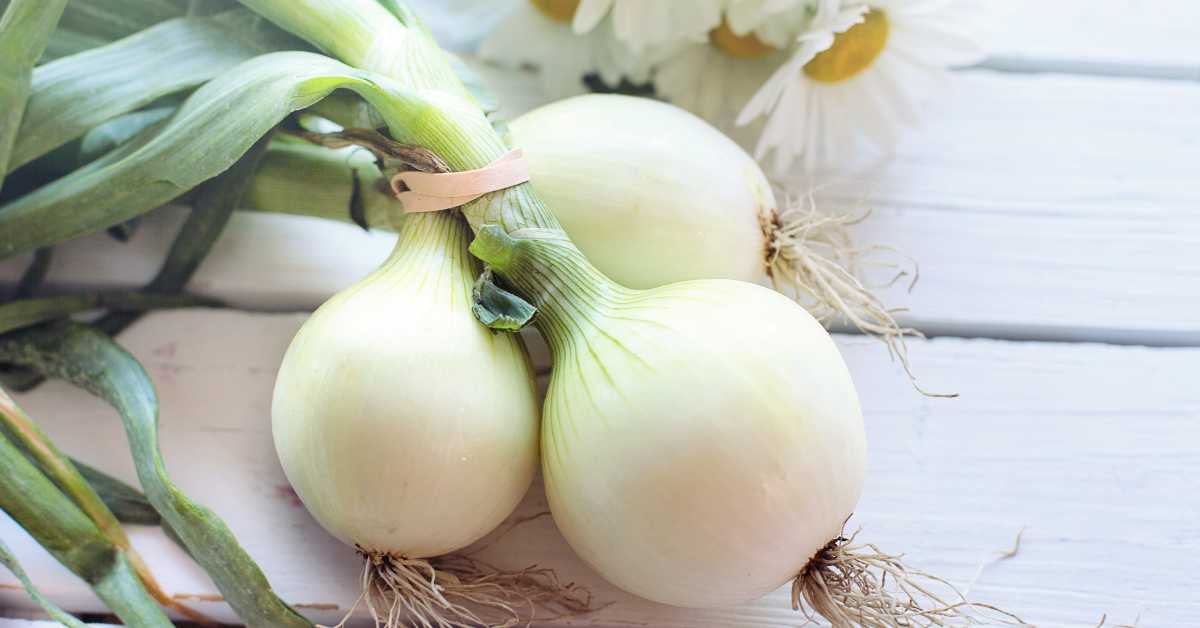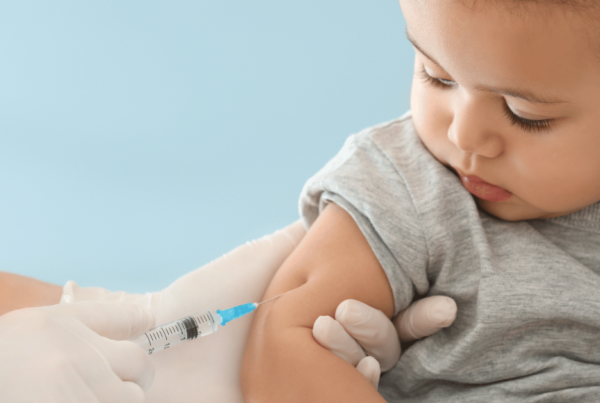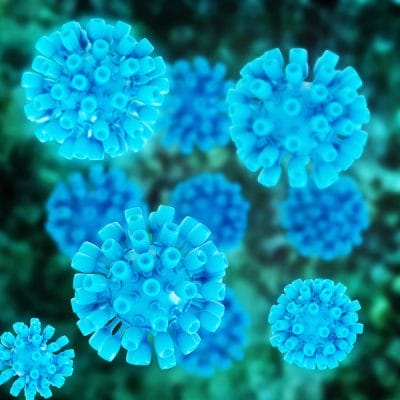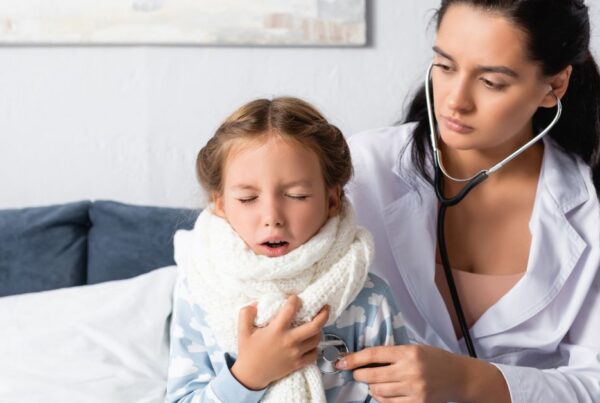- What is Rotavirus?
- How Does Rotavirus Spread?
- Rotavirus Symptoms
- When is the Rotavirus Vaccine Given?
- Conventional Treatment for Rotavirus
- Efficacy of the Rotavirus Vaccine
- How Long Does Rotavirus Vaccine Protection Last?
- How Does Natural Protection Against Rotavirus Compare?
- Ingredients in the Rotavirus Vaccine
- Rotavirus Vaccine FDA Package Inserts
- Controversy and the Rotavirus Vaccine
- Rotavirus Vaccine Reactions
- Who Should Not Get Rotavirus Vaccine?
- The Bottom Line and the Rotavirus Vaccine
What is Rotavirus?
Rotavirus is a virus that primarily affects the digestive system, leading to stomach-flu type symptoms such as diarrhea, vomiting, fever, and dehydration. It spreads easily through contact with contaminated hands, surfaces, food, or water. What differentiates rotavirus from the now more common norovirus is that the diarrhea from rotavirus can be more severe and watery, which increases the risk for dehydration and the possibility of needing medical care (1).
Before the introduction of the rotavirus vaccine in the United States, rotavirus was responsible for over 400,000 doctor visits; 200,000 emergency room visits; and 55,000 to 70,000 hospitalizations annually, with an estimated 20 to 60 deaths each year (2). Since the vaccine was introduced, hospitalizations and severe cases have dropped significantly (3).
However, rotavirus infection is still quite common (4). According to the WHO, nearly every child will contract rotavirus at least once before age 5, most commonly before age 3. The reduction in hospitalizations and severe disease may be due to a shift in the age at which most children contract rotavirus: some studies have shown that prior to vaccine introduction, most children contracted rotavirus under age 1, while after the introduction of vaccination programs, most children contracted it after 20 months of age. More research is required on this topic, though (3).
How Does Rotavirus Spread?
Rotavirus spreads easily through the fecal-oral route, meaning it passes from contaminated hands, surfaces, food, or water into the mouth. It is highly contagious and can survive on surfaces for long periods, making it easy to contract in settings like daycares, schools, and households. The virus is shed in large amounts in stool, even before symptoms appear and for days after they resolve, increasing the likelihood of transmission (1).
Live oral rotavirus vaccines can also lead to temporary viral shedding in stool, typically within the first week after vaccination but sometimes longer. The risk of transmission from vaccine shedding is considered low and any resulting infection tends to be less severe than the wild rotavirus infection, especially in individuals with healthy immune systems. Immune compromised people should avoid contact with infant stool for at least 14 days after vaccination (5).
Factors such as hygiene, immune health, and gut balance can influence susceptibility, while proper handwashing and sanitation play key roles in reducing the spread.
Rotavirus Symptoms
Rotavirus primarily affects the digestive system, leading to a range of symptoms that vary in severity. Common signs of infection include (1):
- Watery diarrhea (can last 3–8 days)
- Vomiting
- Fever
- Abdominal pain
- Loss of appetite
- Dehydration (dry mouth, reduced urination, lethargy, sunken eyes)
In some cases, complications can arise, particularly due to severe dehydration. These may include (1):
- Electrolyte imbalances
- Shock (severe cases)
- Hospitalization
- Death (rare in developed countries but more common in regions with limited medical access)
When is the Rotavirus Vaccine Given?
The rotavirus vaccine is only for infants. It is an oral vaccine, and the number of doses required depends on the brand of vaccine given (6):
- Rotarix (2-dose series): given at 2 and 4 months
- RotaTeq (3-dose series): given at 2, 4, and 6 months
- First dose must be given before 15 weeks of age
- All doses must be completed by 8 months of age
For more information, see: CDC/Alternative Vaccine Schedules
Conventional Treatment for Rotavirus
Treatment for rotavirus focuses on rest, hydration, electrolyte balance, and blood sugar support. For most infants with mild rotavirus symptoms, this can be taken care of at home with breast milk and/or formula plus lots of cuddles.
In severe cases, medical intervention with IV fluids, nasogastric feeding (feeding tube), and bloodwork to monitor electrolyte levels may be necessary.
Efficacy of the Rotavirus Vaccine
The efficacy of the rotavirus vaccine depends on the specific vaccine used (7).
Rotarix (2-dose series)
- 85–98% effective at preventing severe rotavirus gastroenteritis
- 70–90% effective at preventing any rotavirus infection
RotaTeq (3-dose series)
- 98% effective at preventing severe rotavirus gastroenteritis
- 74–87% effective at preventing any rotavirus infection
How Long Does Rotavirus Vaccine Protection Last?
Protection is strongest in the first 2-3 years after vaccination, when children are most vulnerable to serious issues caused by infectious diarrhea. Therefore, while efficacy decreases over time, vaccination significantly reduces hospitalizations and severe illness in young children (7).
How Does Natural Protection Against Rotavirus Compare?
In unvaccinated children, a single rotavirus infection does not provide lifelong immunity, and reinfection can happen at any age. A study in Mexico found that after one natural infection:
- 38% of children were protected from any future rotavirus infection
- 77% were protected from rotavirus-related diarrhea
- 87% were protected from severe diarrhea
Each subsequent infection offered more protection and was usually less severe than the first. Relying on natural infection carries risks, as the initial illness can be severe and may lead to dehydration, hospitalization, or other complications in young children (7).
Ingredients in the Rotavirus Vaccine
THE ROTATEQ BRAND (MERCK) CONTAINS:
- Live rotavirus strains (G1, G2, G3, G4, and P1A[8])
- Sucrose
- Sodium citrate
- Sodium phosphate monobasic monohydrate
- Sodium hydroxide
- Polysorbate 80
- Tissue culture media (contains amino acids and vitamins)
- Fetal bovine serum (trace amounts)
DNA from porcine circoviruses (PCV) 1 and 2 has been detected in RotaTeq. PCV-1 and PCV-2 are not known to cause disease in humans. See “Controversy and the Rotavirus Vaccine” below for further information.
THE ROTARIX BRAND (GLAXOSMITHKLINE) CONTAINS:
- Live rotavirus strain (G1P[8])
- Sucrose
- Di-sodium adipate
- Dulbecco’s Modified Eagle Medium (DMEM)
- Contains amino acids, vitamins, and other nutrients
- Fetal bovine serum (trace amounts)
Porcine circovirus type 1 (PCV-1) is present an older version of Rotarix. In 2022 a PCV-free Rotarix formulation was approved by the FDA (8). PCV-1 is not known to cause disease in humans. See “Controversy and the Rotavirus Vaccine” below for further information.
CONTROVERSIAL INGREDIENTS IN THESE VACCINES:
- Monkey kidney cells (Vero cells) used for growing the virus in Rotarix
- Fetal calf serum
- Polysorbate 80
- Pig (porcine) virus contaminants
If you’d like specific information regarding each vaccine ingredient, including studies, see: Vaccine Ingredients
Rotavirus Vaccine FDA Package Inserts
- RV1 ROTARIX (GlaxoSmithKline) ROTARIX FDA Package Insert
- RV1 PCV-free ROTARIX (GlaxoSmithKline) PCV-Free ROTARIX Package Insert
- RV5 RotaTeq (Merck) RotaTeq FDA Package Insert
Controversy and the Rotavirus Vaccine
Intussusception
Intussusception is a rare condition where part of the intestine folds into itself, causing a blockage. The background rate of intussusception in infants is estimated to be about 34 per 100,000 per year in the first year of life (9). It can be serious and requires immediate treatment. Here’s what we know about the connection between intussusception and rotavirus vaccines:
- Current RotaTeq & Rotarix vaccines: the excess risk of intussusception is about 1-6 per 100,000 doses.
- RotaShield vaccine (withdrawn in 1999): this vaccine increased the relative risk of intussusception by 20-30 fold, with 10-20 excess cases of intussusception per 100,000 vaccinated children (9). This translated to a risk of approximately 1 per 10,000 vaccine doses (10).*
According to rotavirus vaccine package inserts, intussusception has been observed to occur within 21 (Rotateq) and 31 (Rotarix) days after receiving the vaccine with a clustering of cases 7 days after receiving it (11, 12).
Important: Parents should watch for the following signs, especially within the first week or two after vaccination:
- Severe repeated belly pain (comes and goes in waves)
- Crying that is high-pitched, intense, and uncontrollable
- Pulling of knees to the chest due to pain
- Vomiting (especially if it’s forceful or persistent)
- Bloody stools or stool that looks like red jelly
- Swollen or tender belly
- Lethargy (extreme sleepiness, weakness, or lack of energy)
- If you notice these symptoms, seek medical help immediately and let them know your infant recently got a rotavirus vaccine, as intussusception can be life-threatening but is treatable if caught early.*For more information on RotaShield, see: https://pmc.ncbi.nlm.nih.gov/articles/PMC3460207/
Safety of RotaTeq in Infants with History of GI Disorder
The rotavirus vaccines, RotaTeq and Rotarix, have not been specifically studied in infants with certain gastrointestinal (GI) conditions. According to the RotaTeq package insert, there is no safety or efficacy data for infants with a history of GI disorders, such as chronic diarrhea, congenital abdominal conditions, failure to thrive or previous abdominal surgery (12). Similarly, Rotarix has not been evaluated in infants with chronic GI issues, and its package insert advises delaying vaccination in babies experiencing acute diarrhea or vomiting (13). Additionally, infants with a history of intussusception should not receive Rotarix or RotaTeq, as rare cases of intussusception, including fatal ones, have been reported after vaccination (12, 13).
If your baby has a GI condition, it’s a good idea to have a thoughtful conversation with your pediatrician to weigh the potential risks and benefits of vaccination based on your child’s unique health history.
Viral Shedding: Infectious
After receiving the rotavirus vaccine, babies may shed small amounts of the weakened vaccine virus in their stool, particularly after the first dose. For RotaTeq, shedding was observed in about 9% of infants tested after dose 1, but it was much lower after subsequent doses (12, 13). Rotarix shedding tends to peak around day 7, after the first dose. While shedding itself is not harmful to most people, there is a small chance that the vaccine virus could be transmitted to close contacts, especially those with weakened immune systems. Because of this, extra caution is advised when a baby receiving the vaccine has close contact with someone who is immunocompromised, such as individuals with cancer, primary immune deficiencies, or those on immunosuppressive medications.
That said, routine precautions like good hand hygiene, especially after diaper changes, are usually enough to minimize any potential risk. Unlike some live vaccines, rotavirus vaccination is generally not a concern around pregnant people, as they are assumed to have prior immunity to rotavirus from natural exposure.
When weighing the decision to vaccinate, it can be helpful to consider the risk of vaccine virus transmission alongside the risk of contracting and spreading natural rotavirus, which tends to be more severe.
Pig Viruses in 2010 (porcine circovirus type 1 (PCV1 &2))
In 2010, independent researchers discovered that both licensed rotavirus vaccines (RotaTeq and Rotarix) contained fragments of porcine circovirus (PCV), a virus that infects pigs but is not known to cause disease in humans. This finding led to a series of investigations and regulatory responses to assess the potential risks.
The initial discovery was made in March 2010, when an academic research team using new genetic sequencing technology found that Rotarix contained DNA from porcine circovirus type 1 (PCV1). In response, the U.S. Food and Drug Administration (FDA) temporarily recommended that healthcare providers suspend the use of Rotarix while they investigated further. Shortly after, in May 2010, similar testing revealed that RotaTeq contained fragments of both PCV1 and porcine circovirus type 2 (PCV2). Unlike PCV1, PCV2 is associated with disease in pigs, though there was no evidence it could cause illness in humans.
After reviewing the data, the FDA determined that PCV DNA had likely been present in the vaccines since their development and that no safety concerns had emerged from millions of doses given worldwide. By June 2010, the FDA lifted its recommendation to suspend Rotarix, and both vaccines remained licensed and available (14). Regulatory agencies, including the World Health Organization (WHO), Health Canada (15), and the European Medicines Agency (EMA) (16), also concluded that the benefits of rotavirus vaccination far outweighed any theoretical risks from PCV DNA (17).
In 2020, the FDA approved a request from RotaTeq manufacturers to remove any mention of PCV1 and PCV2 from their package insert 18). However, the Canadian RotaTeq product monograph still contains mention PCV1 and PCV2; from our research, it is likely that PCV1 and PCV2 fragments are likely still present to some degree in RotaTeq (19).
In 2022, the FDA approved a PCV-free version of Rotarix (8, 20). However, as of this 2025 update, this version of Rotarix is not available in the United States. It comes in a squeezable tube rather than an oral dosing applicator.
Breast Milk Inactivation of Vaccine
Breast milk from mothers who have been exposed to rotavirus and who have antibodies against it can provide some protection against rotavirus infection in their infants (21). However, these antibodies also have an effect on the live rotavirus vaccine: in some cases, they inactivate the weakened virus before the infant can produce antibodies against it (22, 23).
Research has looked at the effects of withholding breast milk around the time of vaccination, to see if more breastfed infants can produce antibodies against the vaccine: this doesn’t seem to have any benefit, so parents are advised to continue breastfeeding as usual during vaccination (24).
Rotavirus Vaccine Reactions
ROTARIX CONTRAINDICATIONS, WARNINGS, AND PRECAUTIONS:
Rotarix FDA Package Insert (RotaTeq insert is similar)
CONTRAINDICATIONS:
- A demonstrated history of hypersensitivity to the vaccine or any component in the vaccine
- Gastrointestinal Tract Congenital Malformation
- History of Intussusception
- History of Severe Combined Immunodeficiency Disease
WARNINGS AND PRECAUTIONS:
- The tip caps of the prefilled oral applicators of diluent may contain natural rubber latex, which may cause allergic reactions in latex-sensitive individuals.
- Administration of ROTARIX in infants suffering from acute diarrhea or vomiting should be delayed. Safety and effectiveness of ROTARIX in infants with chronic gastrointestinal disorders have not been evaluated.
- Safety and effectiveness of ROTARIX in infants with known primary or secondary immunodeficiencies have not been established.
- In a post marketing study, cases of intussusception were observed in temporal association within 31 days following the first dose of ROTARIX, with a clustering of cases in the first 7 days.
STUDY OF 70,000 INFANTS:
Signs Reported:
- Fever in about 20 percent of infants
- Vomiting or diarrhea in 10 percent
- Poor feeding in 25 percent
- Irritability in 30 percent of infants
Known Severe Reactions:
- Seizures: 1 in 1,000 children
- Kawasaki disease: 1 in 10,000 children
- Intussusception: 1 in 51,000-68,000 to 1 in 100,000 (depending on which study you review)
POST MARKETING SURVEILLANCE
(This refers to the adverse reactions that have been reported by the public since the introduction of the vaccine.)
ROTATEQ:
- Immune system disorders: Anaphylactic reaction
- Gastrointestinal disorders: Intussusception (including death), Hematochezia, Gastroenteritis with vaccine viral shedding in infants with Severe Combined Immunodeficiency Disease (SCID)
- Skin and subcutaneous tissue disorders: Urticaria, Angioedema
- Infections and infestations: Kawasaki disease, Transmission of vaccine virus strains from vaccine recipient to non-vaccinated contacts.
ROTARIX:
- Intussusception resulting in death following a second dose has been reported following a history of intussusception after the first dose.
- Gastrointestinal Disorders: Intussusception (including death), recurrent intussusception (including death), hematochezia, gastroenteritis with vaccine viral shedding in infants with Severe Combined Immunodeficiency Disease (SCID)
- Blood and Lymphatic System Disorders: Idiopathic thrombocytopenic purpura
- Vascular Disorders: Kawasaki disease
- General Disorders and Administration Site Conditions: Maladministration
Who Should Not Get Rotavirus Vaccine?
Some babies should not get the rotavirus vaccine or may need to wait before receiving it.
Infants shouldn’t receive the rotavirus vaccine if (6):
- They’ve had a severe allergic reaction to a previous dose or any ingredient in the vaccine.
- They have a severe latex allergy (RV1 contains latex, so RV5 may be a safer option).
- They have ever had intussusception (a serious bowel condition).
- They have Severe Combined Immunodeficiency (SCID) (a rare immune disorder).
Additionally, caution is recommended for infants if (6):
- They have a moderate or severe illness, including diarrhea or vomiting (wait until they feel better).
- They have a weakened immune system – speak to your doctor to determine if rotavirus vaccine is the best choice as wild rotavirus infections are also serious for this group of infants. It often comes down to risk factors.
- They have chronic digestive issues – there’s not enough research to confirm if the vaccine is safe in these cases.
The Bottom Line and the Rotavirus Vaccine
What is rotavirus? Rotavirus is a common gastrointestinal virus that causes infectious diarrhea similar to Norovirus. It tends to be more severe and waterier, which leads to a higher risk of dehydration and rate medical intervention, particularly in young infants. By age 5, most children have been exposed to and developed antibodies against rotavirus strains.
How common is rotavirus in the United States? Rotavirus is still common in the United States. However, the vaccine shifts the burden of the vaccine from infants to toddlers and young children who are less likely to experience dehydration. By age 5, most children have developed antibodies to rotavirus.
What are the risks of the rotavirus vaccine? The rotavirus vaccine carries many of the same risks as other vaccines (fever, irritability, etc.) plus additional gastrointestinal side effects like vomiting and poor feeding. Severe adverse reactions include intussusception, Kawasaki skin disease, and seizures. Because this is a live virus vaccine, there is also the risk of infectious viral shedding.
What are the benefits of the rotavirus vaccine? The rotavirus vaccine offers partial protection to young infants from serious infectious diarrhea caused by rotavirus. This vaccine has potential benefits for any infant but would be especially helpful for infants who are not breastfed, and/or are in group childcare, and/or have older siblings in group childcare because they would be at increased risk of contracting rotavirus. It would also be especially helpful for families for whom accessing emergency medical care for severe diarrhea and dehydration is complex and/or difficult because of geography, availability, insurance, travel, lack of transportation, systemic barriers, etc. When adequate medical care is available, outcomes are usually good for rotavirus infections. There’s some evidence that vaccinating infants indirectly reduces the number of rotavirus infections in older children and adults, but this requires more research to know for sure (3).
References:
- Franco, M. A., & Greenberg, H. B. (2012). Rotaviruses, Noroviruses, and Other Gastrointestinal Viruses. Goldman’s Cecil Medicine, 2144–2147. https://doi.org/10.1016/B978-1-4377-1604-7.00388-2
- Calnan, M., Krishnarajah, G., Duh, M. S., Haider, B. A., Yermakov, S., Davis, M., & Yan, S. (2016). Rotavirus vaccination in a Medicaid infant population from four US states: compliance, vaccination completion rate, and predictors of compliance. Human vaccines & immunotherapeutics, 12(5), 1235–1243. https://doi.org/10.1080/21645515.2015.1136041
- Mameli, C., Fabiano, V., & Zuccotti, G. V. (2012). New insights into rotavirus vaccines. Human vaccines & immunotherapeutics, 8(8), 1022–1028. https://doi.org/10.4161/hv.20295
- Pan American Health Organization (PAHO). (n.d.). Rotavirus. Paho.org. https://www.paho.org/en/topics/rotavirus
- Anderson E. J. (2008). Rotavirus vaccines: viral shedding and risk of transmission. The Lancet. Infectious diseases, 8(10), 642–649. https://doi.org/10.1016/S1473-3099(08)70231-7
- Centers for Disease Control and Prevention. (2024). Rotavirus Vaccine Recommendations. Cdc.gov. https://www.cdc.gov/rotavirus/hcp/vaccine-considerations/index.html
- Centers for Disease Control and Prevention. (2024). Epidemiology and Prevention of Vaccine-Preventable Diseases. Hamborsky J, Kroger A, Wolfe S, eds. 14th ed. Washington D.C. Public Health Foundation. Chapter 19: Rotavirus. https://www.cdc.gov/pinkbook/hcp/table-of-contents/chapter-19-rotavirus.html
- U.S. Food & Drug Administration. (4 Nov 2022). Rotarix supplement approval [letter]. Retrieved February 11, 2024, from https://www.fda.gov/media/163011/download?attachment
- Hawken, S., Ducharme, R., Rosella, L. C., Benchimol, E. I., Langley, J. M., Wilson, K., Crowcroft, N. S., Halperin, S. A., Desai, S., Naus, M., Sanford, C. J., Mahmud, S. M., & Deeks, S. L. (2017). Assessing the risk of intussusception and rotavirus vaccine safety in Canada. Human vaccines & immunotherapeutics, 13(3), 703–710. https://doi.org/10.1080/21645515.2016.1240846
- Yen, C., Healy, K., Tate, J. E., Parashar, U. D., Bines, J., Neuzil, K., Santosham, M., & Steele, A. D. (2016). Rotavirus vaccination and intussusception – Science, surveillance, and safety: A review of evidence and recommendations for future research priorities in low and middle income countries. Human vaccines & immunotherapeutics, 12(10), 2580–2589. https://doi.org/10.1080/21645515.2016.1197452
- Rotarix – squeezable tube presentation [package insert]. Durham (NC): GlaxoSmithKline; 2008. https://www.fda.gov/media/163010/download?attachment
- RotaTeq [package insert]. Whitehouse Station (NJ): Merck; 2006. https://www.fda.gov/media/75718/download
- Rotarix [package insert]. Research Triangle Park (NC): GlaxoSmithKline; 2008. https://www.fda.gov/media/75726/download
- Willoughby, RE. (2010). FDA OKs use of rotavirus vaccines, add contraindication. AAP News July 2010; 31 (7): 16. 10.1542/aapnews.2010317-16. https://publications.aap.org/aapnews/article-abstract/31/7/16/8672/FDA-OKs-use-of-rotavirus-vaccines-add
- Government of Canada. (2010). Questions and Answers – Porcine Circovirus Found in Rotavirus Vaccines. Canada.ca. https://www.canada.ca/en/health-canada/services/drugs-health-products/biologics-radiopharmaceuticals-genetic-therapies/activities/fact-sheets/questions-answers-porcine-circovirus-rotavirus-vaccines.html#q6
- GSK. (2010). European Medicines Agency maintains position on the continued use of Rotarix™ (rotavirus vaccine). Gsk.com. https://www.gsk.com/en-gb/media/press-releases/european-medicines-agency-maintains-position-on-the-continued-use-of-rotarix-rotavirus-vaccine/
- World Health Organization. (2010). Porcine circoviruses and rotavirus vaccines. Who.int. https://www.who.int/groups/global-advisory-committee-on-vaccine-safety/topics/rotavirus-vaccines/porcine-circoviruses
- U.S. Food & Drug Administration. (14 Aug 2020). RotaTeq supplement approval [letter]. Retrieved February 11, 2024, from https://www.fda.gov/media/141205/download?attachment
- Merck Canada. (2023). RotaTeq® [Drug information]. Retrieved February 11, 2024, from https://www.merck.ca/en/wp-content/uploads/sites/20/2021/04/ROTATEQ-PM_E.pdf
- Lau, Y. L., Fan Leung, T., Sirvan Cetin, B., Cagri Dinleyici, E., Huang, L. M., Halperin, S. A., Hsiao, C. C., Tapiero, B., Tipton, M., Campbell, J. D., Moerman, L., Povey, M., Bi, D., Singh, T., & Rota-096 study group (2022). Safety and reactogenicity of a liquid formulation of human rotavirus vaccine (porcine circovirus-free): A phase III, observer-blind, randomized, multi-country study. Vaccine, 40(14), 2184–2190. https://doi.org/10.1016/j.vaccine.2022.02.065
- Krawczyk, A., Lewis, M. G., Venkatesh, B. T., & Nair, S. N. (2016). Effect of Exclusive Breastfeeding on Rotavirus Infection among Children. Indian journal of pediatrics, 83(3), 220–225. https://doi.org/10.1007/s12098-015-1854-8
- Frank B Williams, Abdul Kader, E Ross Colgate, Dorothy M Dickson, Marya Carmolli, Muhammad Ikhtear Uddin, Salma Sharmin, Shahidul Islam, Taufiqur Rahman Bhuiyan, Masud Alam, Uma Nayak, Josyf C Mychaleckyj, William A Petri, Rashidul Haque, Firdausi Qadri, Beth D Kirkpatrick, Benjamin Lee, Maternal Secretor Status Affects Oral Rotavirus Vaccine Response in Breastfed Infants in Bangladesh, The Journal of Infectious Diseases, Volume 224, Issue 7, 1 October 2021, Pages 1147–1151, https://doi.org/10.1093/infdis/jiaa101
- Mwila K, Chilengi RSimuyandi M, Permar SR,Becker-Dreps S. (2017). Contribution of Maternal Immunity to Decreased Rotavirus Vaccine Performance in Low- and Middle-Income Countries. Clin Vaccine Immunol24:e00405-16. https://doi.org/10.1128/CVI.00405-16
- Ali, A., Kazi, A. M., Cortese, M. M., Fleming, J. A., Moon, S., Parashar, U. D., Jiang, B., McNeal, M. M., Steele, D., Bhutta, Z., & Zaidi, A. K. (2015). Impact of withholding breastfeeding at the time of vaccination on the immunogenicity of oral rotavirus vaccine–a randomized trial. PloS one, 10(6), e0127622. https://doi.org/10.1371/journal.pone.0127622
Reviewed/Updated: 03/25
Content Created: 05/14





